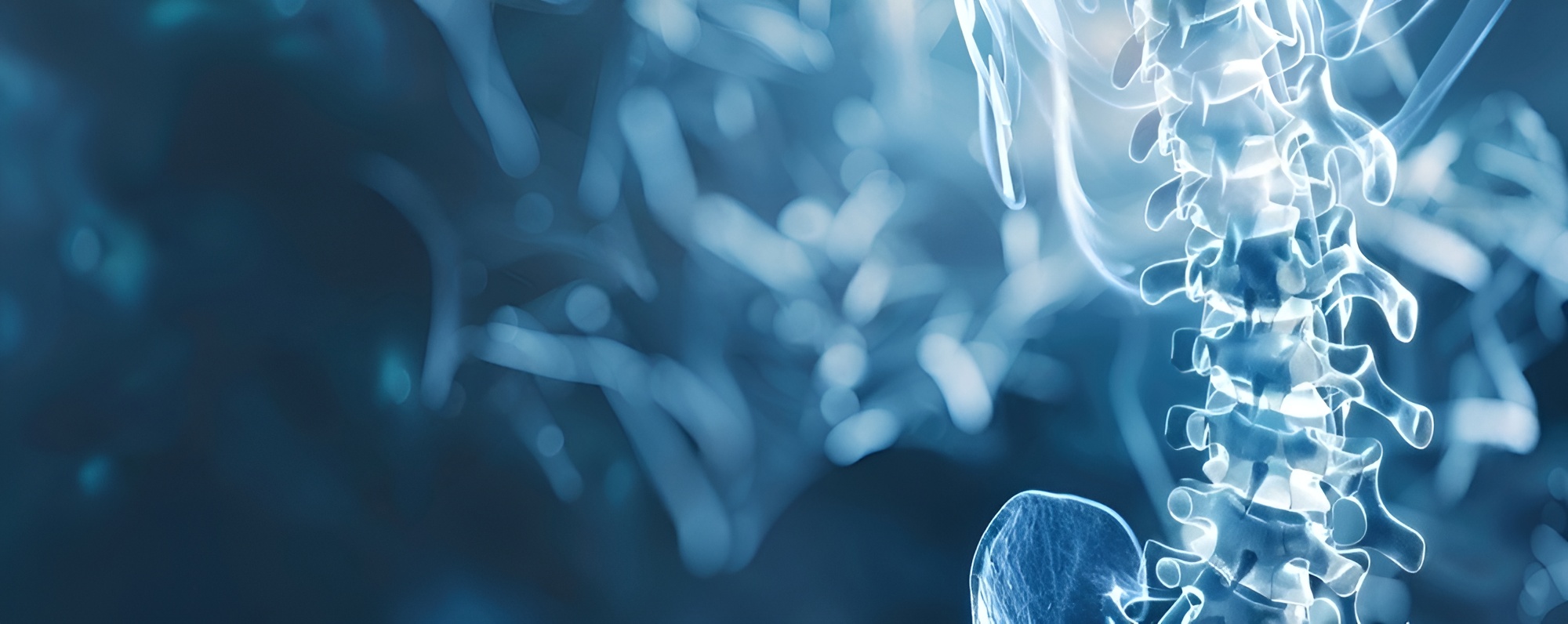
Conditions Library
Comprehensive guide to spine disorders and treatments
Conditions
Ankylosing Spondylitis
Inflammatory disease that can cause vertebrae to fuse, reducing flexibility.
Back and Neck Pain
Comprehensive treatment for acute and chronic pain affecting the spine.
Cauda Equina Syndrome
Severe compression of the nerves in the lower spinal canal, requiring urgent treatment.
Cervical Deformity
Abnormal curvature or alignment of the neck region of the spine.
Cervical Discitis
Infection or inflammation of the cervical intervertebral disc.
Cervical Facet Syndrome
Pain originating from the facet joints in the neck.
Cervical Fracture
A break in one of the cervical vertebrae.
Cervical Myelopathy
Spinal cord compression in the cervical region.
Cervical Radiculopathy
Compressed nerve root in the neck, causing arm pain or numbness.
Cervicalgia (Neck Pain)
General neck pain or discomfort.
Coccydynia
Pain in or around the tailbone area.
Degenerative Disc Disease
Age-related changes to spinal discs causing pain and reduced mobility.
Failed Back Surgery Syndrome
Persistent or recurring pain after spinal surgery.
Herniated Disc
Condition where a spinal disc protrudes, causing pain and nerve irritation.
Lumbar Facet Joint Syndrome
Arthritic changes or irritation in the facet joints of the lumbar spine.
Lumbar Kyphosis
Excessive outward curvature of the lower spine.
Lumbar Radiculopathy (Sciatica)
Irritation of the lumbar spinal nerves causing leg pain and numbness.
Lumbar Spondylolisthesis
Forward slipping of one vertebra over another in the lumbar region.
Lumbosacral Radiculopathy
Nerve pain in the lower spine region, often radiating into the legs.
Post-Laminectomy Syndrome
Chronic pain after a laminectomy procedure.
Sacral Tumors
Abnormal growths in the sacral region of the spine.
Sacroiliac Joint Dysfunction
Pain and inflammation in the joint between the sacrum and ilium.
Scheuermann Disease
Juvenile kyphosis causing rounded posture in the thoracic or upper lumbar spine.
Spinal Arthritis
Inflammation of the joints in the spine leading to pain and stiffness.
Spinal Cord Compression
Pressure on the spinal cord that can cause pain or neurological symptoms.
Spinal Deformities
Abnormal curvature or alignment of the spine.
Spinal Infections
Infections involving the spine, which may lead to pain, fever, and other systemic symptoms.
Spinal Instability
Excessive movement of spinal segments causing pain or nerve compression.
Spinal Stenosis
Narrowing of the spinal canal leading to nerve compression and discomfort.
Spinal Strains & Sprains
Injuries to muscles or ligaments in the back.
Spondylolysis
Stress fracture in a vertebra, often seen in athletes and active individuals.
Tarlov Cysts
Fluid-filled sacs that most commonly develop at the base of the spine.
Thoracic Facet Syndrome
Pain arising from the facet joints in the mid-back region.
Thoracic Myelopathy
Spinal cord compression in the thoracic region.
Vertebral Subluxation
Partial dislocation of a vertebra that may affect spinal structure or function.
Whiplash Injury
Neck injury often from sudden extension and flexion, as in vehicle collisions.